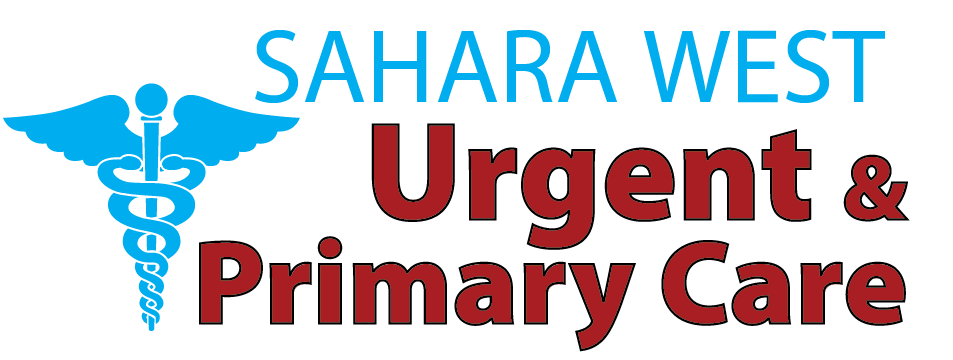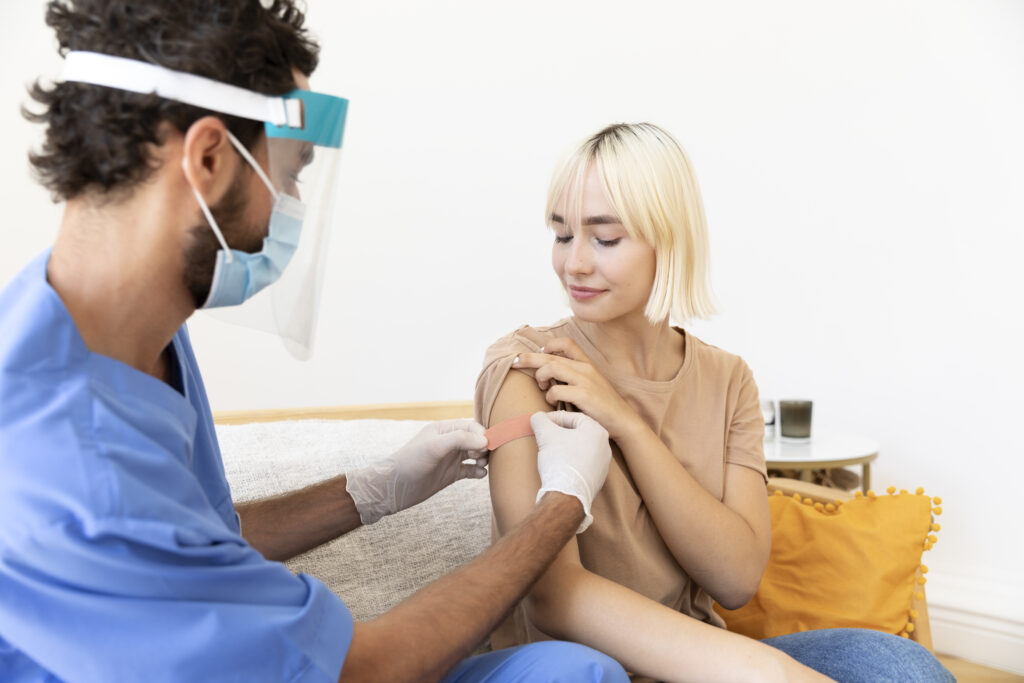Superficial skin injuries, such as scrapes or minor cuts, have a natural tendency to be left alone to twist or to heal once cleaned and cared for. Not all of these are the wounds of endearment. Certain injuries may turn to be serious health risks when neglected. It is necessary to know about the time when a wound goes beyond the boundaries of a manageable condition, when it turns into a medical emergency that might cause such complications as infection, slow healing, or even long-term damage to tissues.
This guide explains to you the most crucial indicators that a wound needs medical attention from professionals. Whether it is infection risks or preexisting medical conditions, we are going to separate why fast action is important to your health and what you should be monitoring.
Deep or Gaping Wounds That Won’t Close
When you cannot heal a wound at home because it is deep down to the extent of revealing fat, muscle, and even bone, it is not something you would want to heal. Such injuries are commonly known to have injured tissues that are not visible. Although bleeding may be delayed, a severe or notched wound may need to be closed with stitches (sutures) so that hematoma or scarring occurs less and infection is limited.
One of the indicators is the opening of the edges of the wound or the separation of the edges of the wound. In case it is not easy to press them together, or your injury continues to bleed even after applying pressure, they should be taken to a professional. Also, deep wounds run a higher risk of nerve, tendon, or ligament damage, particularly in particular, the hands, feet, or joints.
Wounds Caused by Animal Bites or Dirty Objects
Any animal bite (particularly wild or a pet animal that you have no experience with) should be medically assessed immediately. Although animal bites do not necessarily bleed profusely, the infection risk is exceptionally high because of bacteria contained in saliva. There also exists a chance of contracting rabies in some instances, and this may be life-threatening in case it is not treated early.
Punctures caused by unclean/rusty items, such as a nail, metal, or glass, are just as dangerous. The kind of wound makes thin tunnels that bacteria can easily travel into deep without showing surface indicators. One of the greatest concerns here is the very severe bacterial infection known as tetanus. In case your tetanus vaccination is out of date, the health experts could administer a booster and antibiotics to avert any other infections.
Visible Signs of Infection Around the Wound
Minor wounds may be converted into serious ones due to infections, which are some of the most common causes. During the initial phases, an infection can manifest in minor redness or a small swelling; however, the symptoms can rapidly increase in case they are neglected.
Here are signs of wound infection that require medical attention:
- Redness that spreads beyond the wound
- Swelling or a feeling of warmth around the area
- Yellow or green discharge (pus)
- Increased or throbbing pain
- A foul smell is coming from the wound
An infected wound that’s left untreated may lead to cellulitis (a deep skin infection), abscess formation, or even sepsis—a potentially fatal bloodstream infection. If you develop a fever or feel chills, it could indicate that the infection has spread beyond the wound site, and you should seek care immediately.
Wounds That Are Not Healing or Seem to Be Worsening
The majority of the wounds have a predictable healing schedule. First, the body creates a clot and scab, and after several days or weeks, tissue repair is done. However, when a wound fails to improve or, even worse, it re-opens after forming a scar, then there is a possibility that it has an underlying condition that impedes the healing progress.
Retarded healing may be due to infection, repeated blows to the region, or deficient circulation. Pressure ulcers, diabetic foot ulcers, or venous leg ulcers are examples of chronic wounds that are not easily handled without specific wound care.
Warning signs include:
- Wounds that stay red or inflamed beyond a week
- Scabs that crack open or bleed repeatedly
- Persistent drainage or odor
- Skin discoloration or darkening around the wound
A healthcare provider can assess whether advanced treatments like debridement, specialized dressings, or antibiotics are needed to promote healing and prevent tissue loss.
Wounds in People with Underlying Health Conditions
Others are more susceptible to complications of wounds since they have pre-existing health problems. A small wound may have serious consequences, especially in the case of people with diabetes, autoimmune diseases, peripheral artery disease, or immune immune-compromised condition.
An example of such a condition is diabetes, whereby an elevated amount of sugar in the blood will inhibit circulation and nerve damage, especially in the feet. Consequently, wounds may remain unrecognized until the time they get infected or necrotic (dead tissue). The nature of these wounds is to heal poorly and have a higher risk of infection; therefore, regular wound care and monitoring would be necessary in these people.
Being in a high-risk group, you should not wait till you see some signs of the complications. Even when they are small, injuries need to be treated immediately by visiting a doctor. Intervention at an early age avoids the need to go to the hospital and sustain a lasting injury.
Continuous or Excessive Bleeding That Won’t Stop
Although the majority of wounds can be characterized by the appearance of bleeding, such bleeding should reduce considerably in 10 to 15 minutes after applying tough pressure. Otherwise, this could also serve as a sign of bigger blood vessel damage or damage of deeper tissues.
Another warning sign is bleeding that penetrated many gauze materials or started again even after bleeding seems to have stopped. During this, the wound may need to be stitched, cauterized, or sealing may be done using medical tapes to ensure the vessels of blood vessels are well sealed.
Another thing that should be considered is the issue of being on blood thinners or having a clotting disorder, since it may inhibit the normal clot formation, making it longer to stop the bleeding.
Presence of Fever, Red Streaks, or Swollen Lymph Nodes
Fever, chills, or fatigue arouse systemic symptoms that show that the body is trying to combat an intrinsic infection. When these symptoms are accompanied by a red, painful, or swollen wound, it is necessary to take it to a doctor.
The other indication is the showing of red streaks that extend outwards away from the point of the wound. These stripes indicate a diffusing infection of the lymphatic system-that is, lymphangitis. This could subsequently lead to a life-threatening condition without the prompt use of antibiotics.
Inflamed lymph nodes, particularly around the point of injury (the underarms, the groin, or the neck), are also an indication that your immune system is on the warpath and may require some medical assistance.
Wounds Near the Face, Eyes, or Joints
The site is of significance as far as wound severity is concerned. Lacerations repair Las Vegas on the face or around the eye area might need the attention of a plastic surgeon or specialist to reduce scar tissue and avoid any cuts on nerves. These areas also make it more prone to the faster development of infection in sensitive structures such as the sinuses or the brain.
Likewise, injuries that involve joints (such as those to knees, elbows, or fingers etc.) are likely to reopen after moving and being strained. These regions might need to be immobilized or sewn so that they can recover well.
The wounds on feet or hands also imply certain extra risks since they get more exposed to bacteria and are more difficult to clean. Whenever there are signs of swelling, rigidity, or trouble in moving the part, it should be treated.
Why You Shouldn’t Delay Medical Care for Serious Wounds
Even a major injury can be followed by significantly worse consequences in case of delaying medical care after a serious wound. Whether it is systemic infections, slow healing of wounds, nerve or muscle injuries, untreated wounds may result in hospitalization, surgery, or sometimes, permanent consequences.
Although a wound may not sound life-threatening when you first notice it, your body may be telling you that something more is wrong. In case of uncertainty, a medical practitioner should examine the injury. It is preferable and less complicated to treat at an early stage than to treat the complications at a later stage.
Conclusion:
Your body tells you when there is something bad, and wounds are not an exception. These red flags, which include the inability to heal, an ongoing flow, and infection signs, have to be checked. Early intervention can guard against long-term harm and provide the appropriate recovery.
In case you detect any of the above-mentioned signs, do not hesitate and immediately address a doctor or a medical professional. Use caution with what you eat; your body will appreciate it. To schedule your appointment with the highest standard of care, visit Sahara West Urgent Care on our website, where you can also explore more informative blogs.
Faqs
How do I know if my wound is infected?
Look for redness, swelling, pain, pus, warmth, or a bad odor. Fever or red streaks may indicate a more serious infection.
Should I go to the hospital for a deep cut?
Yes, if the wound is deep, won’t close, or continues to bleed, it likely needs stitches and medical evaluation.
Can I wait for a puncture wound to heal naturally?
No. Puncture wounds, especially from dirty objects, pose a high risk of tetanus or internal infection. Always seek medical advice.
What if my wound keeps reopening?
This may indicate poor healing or excessive movement. A doctor can assess if stitches or other treatments are necessary.
How can I care for a wound at home safely?
Clean it gently, keep it covered, change dressings daily, and watch for signs of infection. But always err on the side of caution if anything seems unusual.





